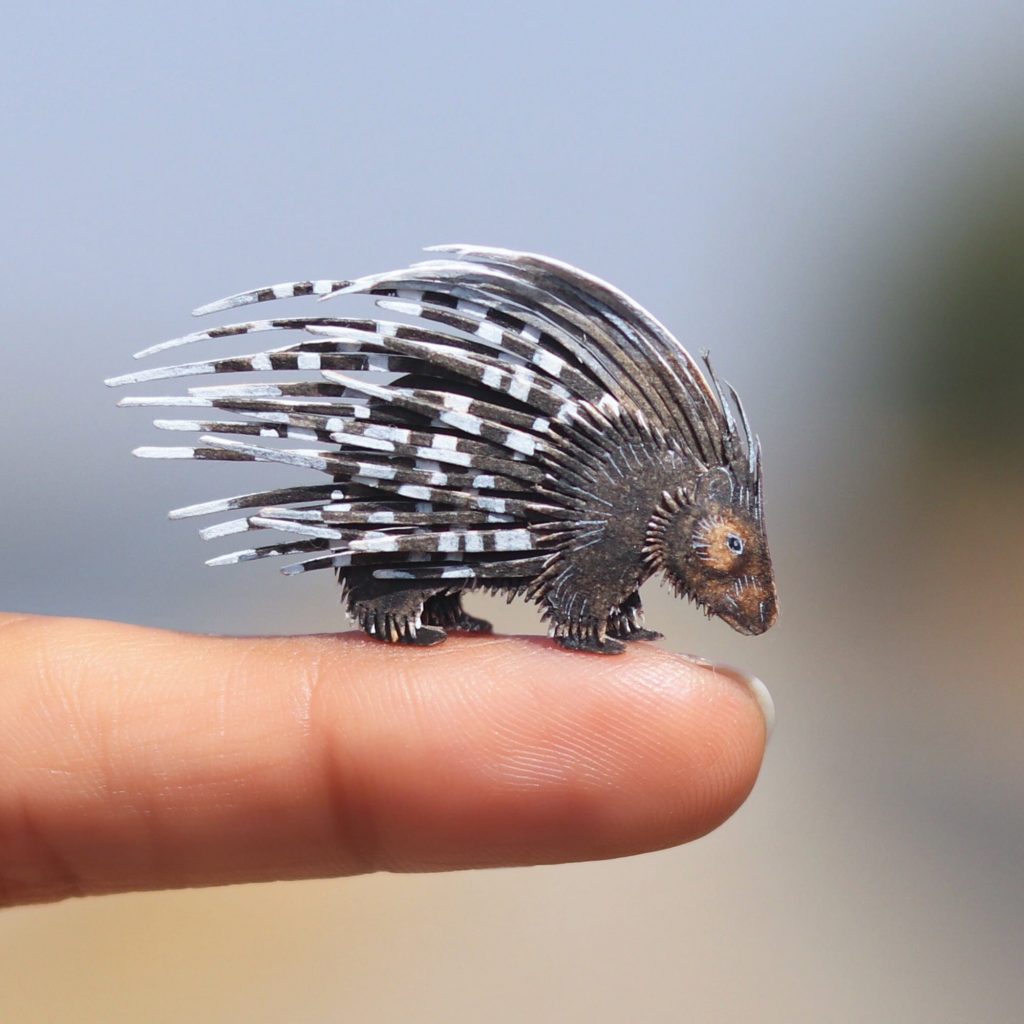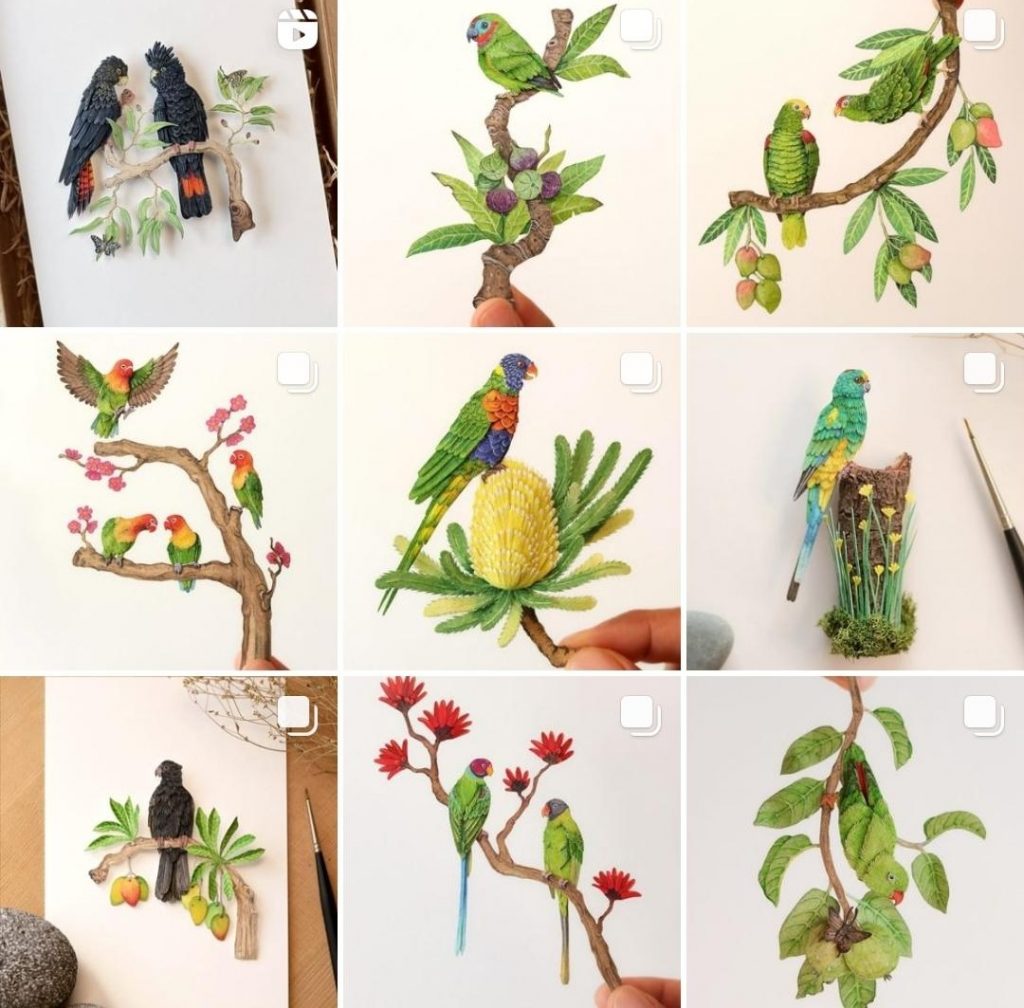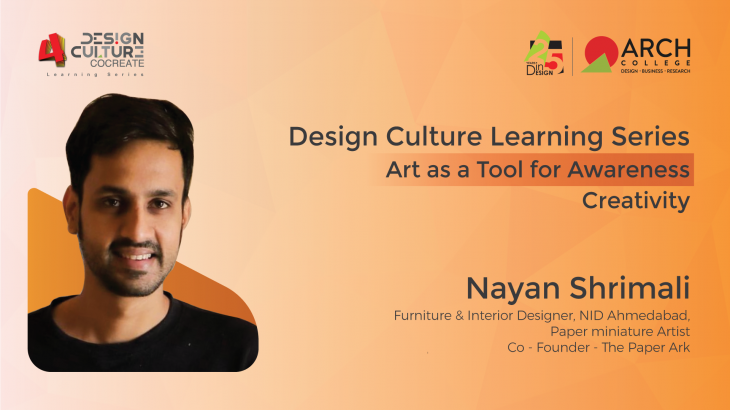Art has always been a mirror of society, reflecting its beauty, struggles, and complexities. But more than just a reflection, art can shape perceptions, challenge norms, and drive social change. In an age where digital media saturates our lives, the role of art in social advocacy has become more crucial than ever. It offers a unique, compelling way to raise awareness and engage people in conversations that might otherwise be difficult to start.
In our Design Culture co-creative learning Series session, we had the privilege of hearing from Nayan and Venus, who create intricate miniature paper-cut art inspired by wildlife to raise awareness about local species. Nayan and Venus exemplify how art can be a powerful tool for advocating social and environmental issues. This blog explores innovative and creative ways to promote awareness through art and design. We’ll also explore how art plays a crucial role in social advocacy, using its unique power to connect, inspire, and drive meaningful change.
What makes visual storytelling effective in raising awareness?
Visual art, including painting, sculpture, and photography, can tell stories that words sometimes cannot. A powerful image can speak to the heart, sparking empathy and understanding. For example, artists like Nayan and Venus, demonstrate how art can educate the public about local species and conservation efforts through miniature paper-cut art. Their 1,000-day project, which began in 2017, documents a diverse range of birds and animals. By collaborating with wildlife photographers, they strive to educate the public on the importance of conservation and preserving ecosystems through their captivating art.

Paper Minuture by Nayan & Venus
Another example is murals in public spaces that beautify urban areas and serve as constant reminders of social issues, keeping them in the public eye. These artworks can be a rallying point for communities, inspiring collective action.
Engaging the Public through Interactive Art
Performance art isn’t just for the stage—it can be a dynamic tool for advocacy. Imagine combining your design skills with performance to create interactive installations that engage people in multifold ways. Interactive design, whether through a website, app, or physical installation, allows for a more immersive experience. This kind of engagement can leave a lasting impression on your audience, making them more likely to support the cause you’re advocating for.

A Sample design by our student on #feed the paws
As part of an assignment, one of our students designed an awareness poster focused on the needs of dogs and other street animals, encouraging the public to provide them with food, shelter, and care. Nayan suggested that this initiative could be further amplified by setting up visible feed spots in public spaces, drawing more attention to the cause and inspiring community involvement.
Driving Engagement through Digital Art and Social Media
In the digital age, social media has become a powerful platform for art and advocacy. Digital art and memes, for example, are easily shareable and can go viral, reaching a broad audience in a short amount of time. Social media campaigns that incorporate creative visuals and messages can quickly capture public attention and spark widespread discussions.
Our speakers, Nayan and Venus have built an impressive online presence, with a significant following and high engagement on their social media platforms. Their innovative paper art, which creatively highlights wildlife conservation, has garnered widespread attention and admiration. You can check out thepaperbark social media profile for some great inspiration and ideas on how to use the art for social awareness. Their innovative work is sure to spark some creative ideas!

Transforming awareness through social media
Using Design to Advocate for Change
Throughout history, artists have used their creativity to shed light on social issues. From Picasso’s Guernica, which captured the horrors of war, to Banksy’s provocative street art that comments on contemporary issues, art has a unique ability to transcend language barriers and evoke powerful emotions. Unlike data or statistics, which can often feel abstract, art connects with people on a visceral level, making issues more tangible and relatable.
For design students, their approach serves as a reminder that art can be both a form of personal expression and a powerful tool for engaging the public on critical issues. Whether it’s a striking poster, a captivating digital illustration, or an impactful public installation, your designs have the potential to be powerful catalysts for change. Consider your work as a visual argument, one that directly engages the emotions of your audience, urging them to view the world from a fresh and compelling perspective.
The Role of Collaboration in Social Awareness
Collaborative art projects bring people together to create something meaningful, often with a social message. These projects can be local or global, involving communities in the creation of art that speaks to their shared experiences and concerns. Nayan and Venus’ collaboration with wildlife photographers is a perfect example of how interdisciplinary partnerships can enhance the impact of advocacy art. By working with experts in wildlife photography, they ensure that their art is not only visually accurate but also grounded in real-world observations. This adds a layer of authenticity to their work, making it a more effective tool for education and advocacy.
For design students, this highlights the importance of collaboration in your projects. Partnering with specialists from different fields can provide new insights and elevate your work, making it more relevant and impactful. Whether you’re working on a campaign for social justice, environmental conservation, or any other cause, consider how collaborations can strengthen your message.

Golden Oriole sculpture – 1000th artwork from the “1000 Feathers Project by Nayan & Venus
To summarise, art in all its forms—whether visual, performative, digital, or crafted—has an unparalleled ability to foster social change. It speaks to us in ways that statistics and reports cannot, touching our emotions and challenging our beliefs. As design students, you have a unique opportunity to channel your creativity into social good. Whether through visual storytelling, performance art, digital campaigns, or collaborative projects, your designs can drive positive change. Our curriculum, guidance, and expertise are designed to support you as you learn, explore, and experience the power of design. With the resources and opportunities available, you can harness your creativity to make a real difference and drive positive change.
So, let your creativity shine and use it to advocate for the causes that matter most to you! Listen to the complete session with these artists on the YouTube channel of ARCH College of Design & Business. Also, subscribe to the channel to get further updates on the DCLS 2025, scheduled in June, with sessions with industry professionals.
